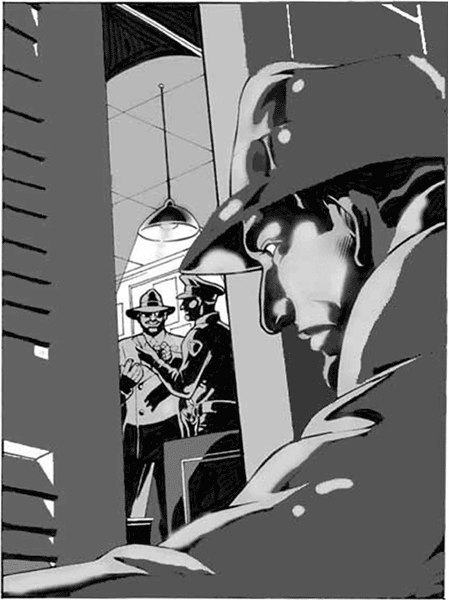A Mysterious or Interesting World That Takes A While to Sort Out
| Mystery works in films, it works on TV, and it works in games. When you play Thief or Thief II, you're thrown into a strange world, full of mysteries. Figuring out how they all fit together motivates you to continue. The same goes for a quite a number of games Myst, Morrowind, the Panzer Dragoon series, and Grim Fandango, to name just a few. There is a possible danger of swamping the player with too many mysteries. The result can be one big confusion. A solution is, once the player learns the answers to some of the game story's mysteries, you can then introduce some new ones. An ExampleIn the game illustrated on the next page, you're a detective, spying on a mob boss. You had a hunch he was paying off someone in the police department to minimize police harassment and investigations. But here you find your own police chief paying off the mobster. What's going on? You, the player, are suddenly saddled with a mystery. The desire to solve it will help motivate you to move forward in the game. By the way, your motivation will be stronger to unravel if the corruption in the police department that you first suspected, and that caused you to spy on this mob boss, has a negative impact on you or someone you care about.[3]
|
EAN: 2147483647
Pages: 394
